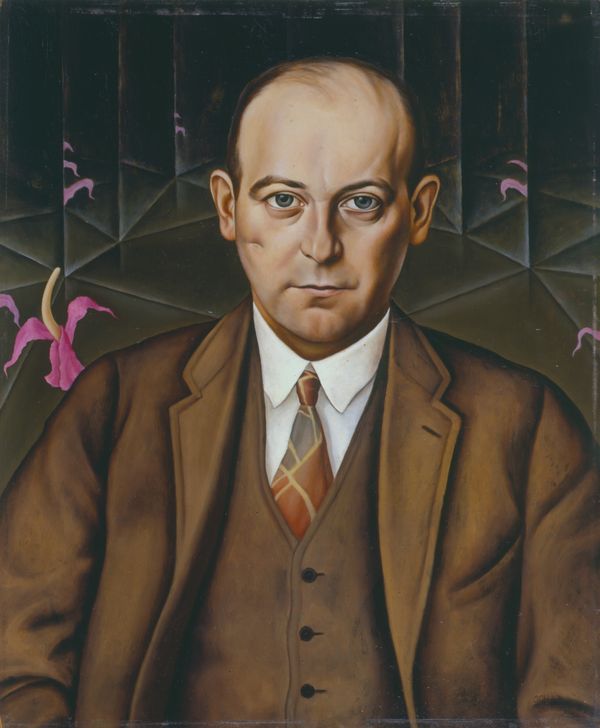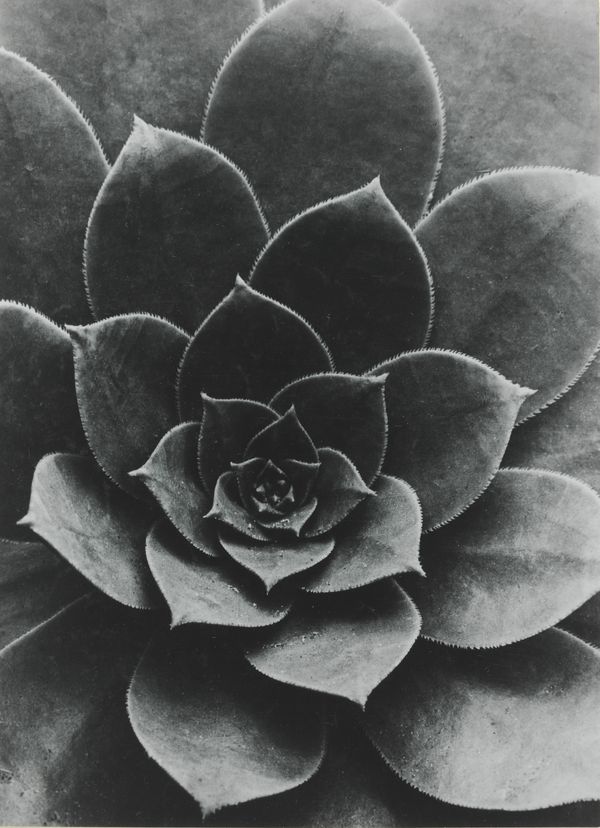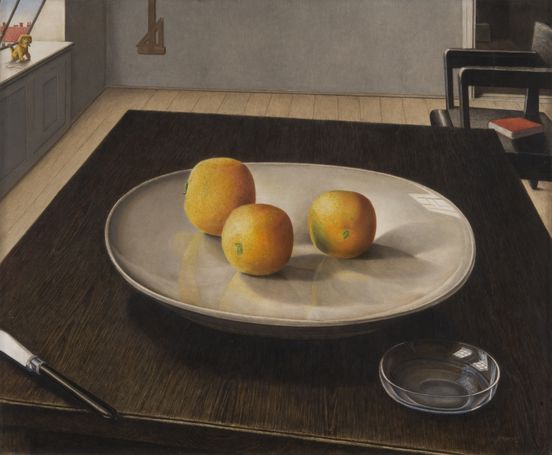The art critic Paul Westheim called the Berlin of the 1920s “Europe’s most objective capital”, describing a dominant mood of the times. In art too, a sober style developed after the First World War, and it soon came to be known as New Objectivity [Neue Sachlichkeit].
The artists who adopted it had chosen to observe the visible world, focusing on everyday, unspectacular subjects. Still life, (urban) landscapes and portraits topped the artistic agenda for New Objectivity. In Berlin, its adherents also produced studies of local milieus. Their social critique was explicit. The people and objects in these paintings and drawings are isolated by the distance between them. The compositions are clearly structured, and depictions are detailed. But New Objectivity did not simply reproduce the world of the 1920s. Space and proportions are often distorted, and colours rarely match their real-life motif. Besides, the background is often symbolically encoded. New Objectivity, then, was only objective on the surface. The mellow mood of artists like Otto Dix, George Grosz, Jeanne Mammen and Christian Schad reflected the alienation and crisis in modern society.

Christian Schad, Portrait of the Writer Ludwig Bäumer, 1927
© Christian Schad Stiftung Aschaffenburg / VG Bild-Kunst, Bonn 2019
Albert Renger-Patzsch, Untitled (Sempervivum percarneum), 1922/23
New Objectivity also inspired a sober, neutral idiom in photography. While New Vision [Neues Sehen] reinvented the world in artistic ways, the pictures of New Objectivity testify to a respect for reality. The technical potential of the medium was exploited to highlight the simplicity and beauty of things. A flourishing trade in illustrated magazines in the 1920s boosted demand for fashion and commercial photography, while photojournalism was refined by photographers like Marianne Brandt, Hannah Höch, Lotte Jacobi, Sasha Stone and Umbo (Otto Umbehr) into an independent, highly popular genre.
Neues Bauen
After the First World War, Berlin became the centre of modern architecture in Europe. One characteristic feature of the Neues Bauen (literally translated as new way of building) in the Weimar Republic was an abandonment of representative detail. Cubic architectural volumes and clear geometric forms took the place of pillars, pilasters and small-scale ornamentation. Industrially manufactured building materials such as steel, glass or concrete replaced quarry stone and stucco work. Facades were usually divided horizontally by means of continuous window bands and cornices.
The protagonists of Neues Bauen in Berlin included Ludwig Mies van der Rohe, Martin Wagner, the Luckhardt brothers and Erich Mendelsohn, whose new architectural designs influenced the style of an entire generation of architects.
The programmatic study for a glass skyscraper by Mies van der Rohe, for example, exerted a great influence on many contemporaries. Here, for the first time, a glass "skin" closes around the "bones" of a steel supporting structure, thus allowing the largely variable use of all the main usable areas. The light-filled aesthetics of this "skin-and-bones" architecture is given a special presence by Curt Rehbein's photographs.
